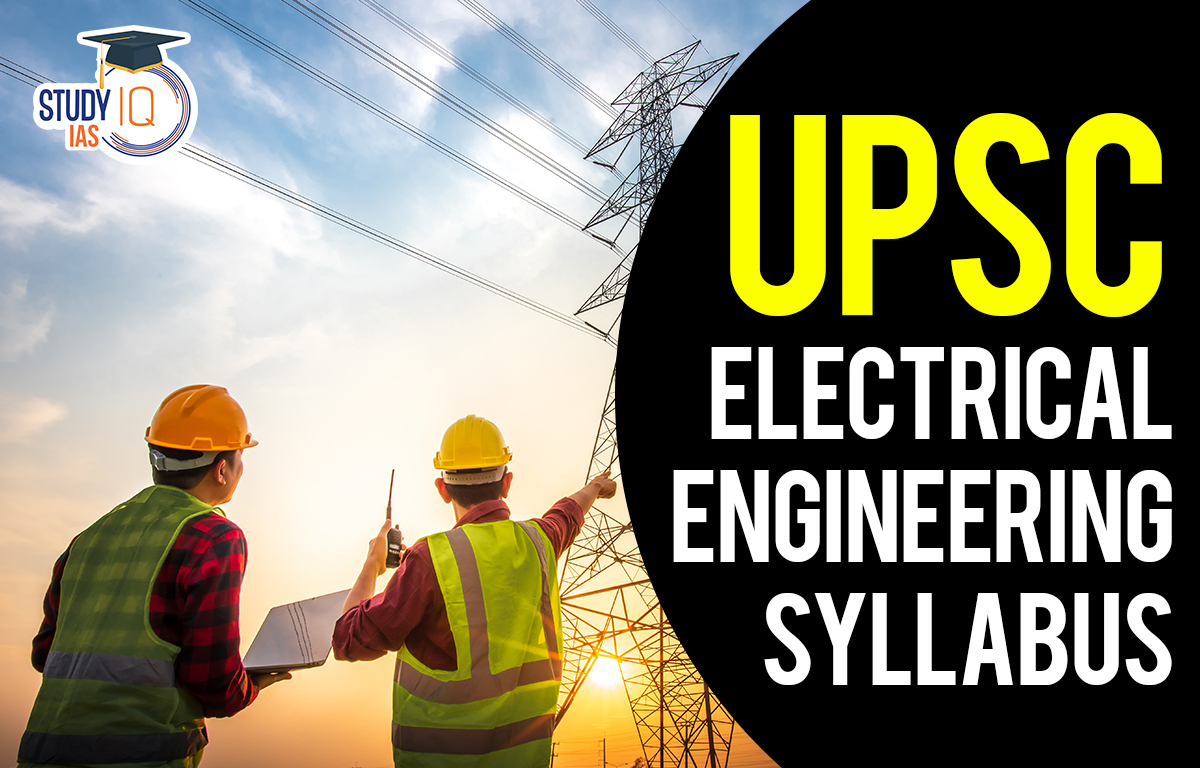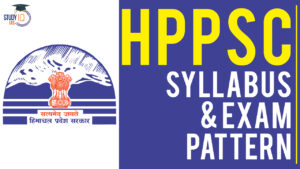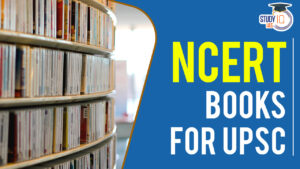Table of Contents
The UPSC optional subjects list includes 48 subjects, including Electrical Engineering, which focuses on candidates’ understanding of basic concepts and application of knowledge. This subject covers Analog and Digital Electronics, Power Systems, Microprocessors, Power System Protection Measurement and Instrumentation among other topics. Candidates should select Electrical Engineering as an optional subject in the UPSC Syllabus 2025 if they have a strong interest and background in the subjects so they can prepare for the exam easily.
UPSC Electrical Engineering Optional Syllabus 2025
In UPSC Mains, each Optional Subject has two papers (paper I and paper II). Each paper carries 250 marks for a total of 500 marks. Candidates who studied electronics or electrical engineering in their undergraduate degree, or who work as electrical engineers, facility support engineers, and so on, are eligible to take this optional in UPSC Mains. This article contains a detailed UPSC Electrical Engineering syllabus.
UPSC Electrical Engineering Paper 1 Syllabus 2025
The UPSC Electrical Engineering Syllabus Paper 1 consists of 8 Major Topics and those are Circuit Theory, Signals & Systems, E.M. Theory, Digital Electronics, Energy Conversion, Power Electronics and Electric Drives, and Analog Communication. The detailed syllabus is given below:
1. Circuit Theory
Circuit components; network graphs; KCL, KVL; circuit analysis methods: nodal analysis, mesh analysis; basic network theorems and applications; transient analysis: RL, RC and RLC circuits; sinusoidal steady state analysis; resonant circuits; coupled circuits; balanced 3-phase circuits; Two-port networks.
2. Signals & Systems
Representation of continuous-time and discrete-time signals & systems; LTI systems; convolution; impulse response; time-domain analysis of LTI systems based on convolution and differential/difference equations. Fourier transform, Laplace transform, Z-transform, Transfer function. Sampling and recovery of signals DFT, FFT Processing of analog signals through discrete-time systems.
3. E.M. Theory
Maxwell’s equations, wave propagation in bounded media. Boundary conditions, reflection and refraction of plane waves. Transmission line: travelling and standing waves, impedance matching, Smith chart.
4. Analog Electronics
Characteristics and equivalent circuits (large and small-signal) of Diode, BJT, JFET and MOSFET. Diode circuits: clipping, clamping, rectifier. Biasing and bias stability. FET amplifiers. Current mirror; Amplifiers: single and multi-stage, differential, operational, feedback and power. Analysis of amplifiers; frequency response of amplifiers. OPAMP circuits. Filters; sinusoidal oscillators: criterion for oscillation; single-transistor and OPAMP configurations. Function generators and wave-shaping circuits. Linear and switching power supplies.
5. Digital Electronics
Boolean algebra; minimization of Boolean functions; logic gates; digital IC families (DTL, TTL, ECL, MOS, CMOS). Combinational circuits: arithmetic circuits, code converters, multiplexers and decoders. Sequential circuits: latches and flip-flops, counters and shift registers. Comparators, timers, multivibrators. Sample and hold circuits, ADCs and DACs. Semiconductor memories. Logic implementation using programmable devices (ROM, PLA, FPGA).
6. Energy Conversion
Principles of electromechanical energy conversion: Torque and emf in rotating machines. DC machines: characteristics and performance analysis; starting and speed control of motors; Transformers: principles of operation and analysis; regulation, efficiency; 3-phase transformers. 3-phase induction machines and synchronous machines: characteristics and performance analysis; speed control.
7. Power Electronics and Electric Drives
Semiconductor power devices: diode, transistor, thyristor, triac, GTO and MOSFET-static characteristics and principles of operation; triggering circuits; phase control rectifiers; bridge converters: fully-controlled and half-controlled; principles of thyristor choppers and inverters; DCDC converters; Switch mode inverter; basic concepts of speed control of dc and ac Motor drives applications of variable-speed drives.
8. Analog Communication
Random variables: continuous, discrete; probability, probability functions. Statistical averages; probability models; Random signals and noise: white noise, noise equivalent bandwidth; signal transmission with noise; signal to noise ratio. Linear CW modulation: Amplitude modulation: DSB, DSB-SC and SSB. Modulators and Demodulators; Phase and Frequency modulation: PM & FM signals; narrowband FM; generation & detection of FM and PM, Deemphasis, Preemphasis. CW modulation system: Superheterodyne receivers, AM receivers, communication receivers, FM receivers, phase locked loop, SSB receiver Signal to noise ratio calculation for AM and FM receivers.
UPSC Electrical Engineering Paper 2 Syllabus 2025
The UPSC Electrical Engineering Syllabus Paper 2 consists of 6 Major Topics those are Control Systems, Microprocessors and Microcomputers, Measurement and Instrumentation, Power Systems: Analysis and Control, Power System Protection, and Digital Communication. The detailed syllabus is given below:
1. Control Systems
Elements of control systems; block-diagram representation; open-loop & closed-loop systems; principles and applications of feedback. Control system components. LTI systems: time-domain and transform-domain analysis. Stability: Routh Hurwitz criterion, root-loci, Bode plots and polar plots, Nyquist’s criterion; Design of lead-lad compensators. Proportional, PI, PID controllers. State variable representation and analysis of control systems.
2. Microprocessors and Microcomputers
PC organisation; CPU, instruction set, register set, timing diagram, programming, interrupts memory interfacing, I/O interfacing, programmable peripheral devices.
3. Measurement and Instrumentation
Error analysis; measurement of current, voltage, power, energy, power factor, resistance, inductance, capacitance and frequency; bridge measurement. Signal conditioning circuit; Electronic measuring instruments: multimeter, CRO, digital voltmeter, frequency counter, Q-meter, spectrum-analyzer, distortion-meter. Transducers: thermocouple, thermistor, LVDT, strain-gauge, piezo-electric crystal.
4. Power Systems: Analysis and Control
Steady-state performance of overhead transmission lines and cables; principles of active and reactive power transfer and distribution; per-unit quantities; bus admittance and impedance matrices; load flow; voltage control and power factor correction; economic operation; symmetrical components, analysis of symmetrical and unsymmetrical faults. Concept of system stability: swing curves and equal area criterion. Static VAR system. Basic concepts of HVDC transmission.
5. Power System Protection
Principles of overcurrent, differential and distance protection. Concept of solid state relays. Circuit breakers. Computer-aided protection: Introduction; line bus, generator, transformer protection; numeric relays and application of DSP to protection.
6. Digital Communication
Pulse code modulation (PCM), differential pulse code modulation (DPCM), delta modulation (DM), Digital modulation and demodulation schemes: amplitude, phase and frequency keying schemes (ASK, PSK, FSK). Error control coding: error detection and correction, linear block codes, convolution codes. Information measure and source coding. Data networks, 7-layer architecture.


 HPPSC Syllabus 2025, Check HPAS Prelims ...
HPPSC Syllabus 2025, Check HPAS Prelims ...
 NCERT Books for UPSC Preparation, Check ...
NCERT Books for UPSC Preparation, Check ...
 UPSC Syllabus 2025, Check UPSC CSE Sylla...
UPSC Syllabus 2025, Check UPSC CSE Sylla...





















